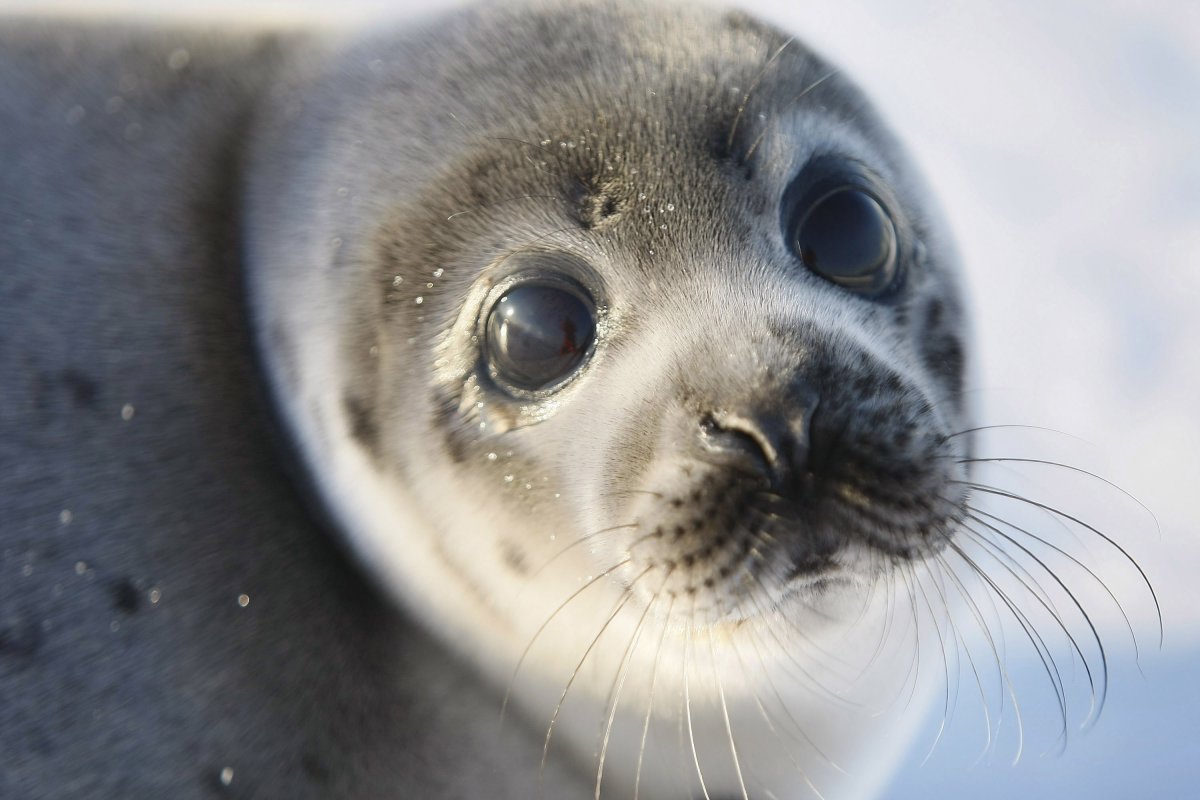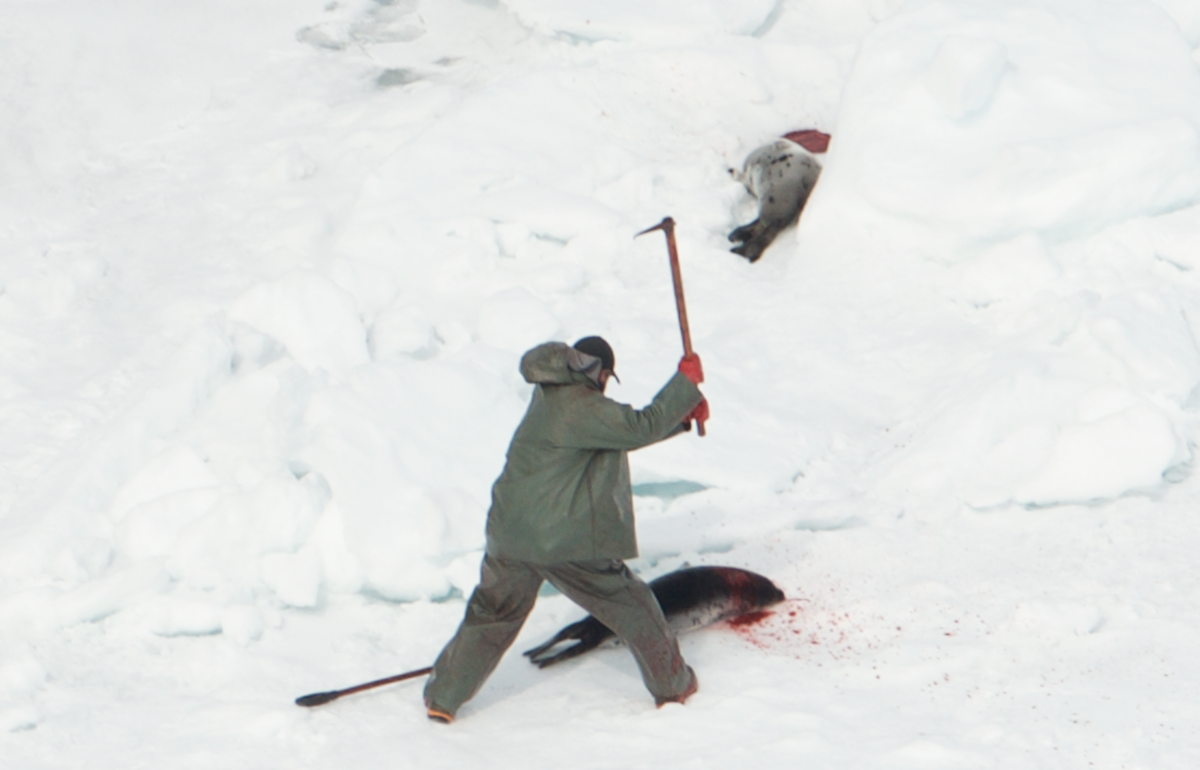The seal slaughter season on the Magdalen Islands in the Gulf of Saint Lawrence begins today, with the Canadian government announcing those with commercial and personal licenses can begin hunting in designated areas on March 17.
The Canadian seal hunt has taken place for hundreds of years, with early 17th-century settlers targeting harp seals in the region. Archaeological evidence also suggests indigenous people have hunted the species for about 4,000 years. The hunt has social, cultural and economic importance, although the latter appears to be in decline.
The hunt, which is considered one the biggest slaughtersw of marine mammals on the planet, is regulated by the Canadian government. Hunting levels peaked in the mid to early 2000s. In 2004, 366,000 seals were killed. Kill rates have plummeted in the last decade as demand for seal-related products falls. In 2019, 32,071 harp seals were slaughtered.
Sealing is divided into different areas. Around 30 percent of the seals killed as part of the annual harvest come from the Magdalen Islands, the Quebec North Shore and Western Newfoundland. The remaining 70 percent come from the 'Front,' which is east of Newfoundland.

The region being targeted from March 17 surrounds the Magdalen Islands, which is a harp seal nursery. Seals begin to gather around the islands around December, giving birth in late February and early March. Mothers feed their pups for around 15 days, at which point they leave the young to fend for themselves.
It has been illegal for hunters to kill seal pups, known as whitecoats, since 1987. Young seals lose their white fur by the time they are three or four weeks old.
The Government of Canada says it ensures the harvesting of seals is humane by implementing a strictly enforced kill method. Harvesters must shoot or strike the seal on the top of the head with a gun, club or hakapik. They must then check if the skull has been crushed, meaning they know the seal is either dead or unconscious. The seal is bled via two axillary arteries for at least one minute before it is skinned.
Animal rights groups have strongly opposed seal hunting for decades, calling on the Canadian government to put an end to the practice. Rebecca Aldworth, executive director of Humane Society International/Canada, told Newsweek the suffering of seal pups is "utterly heartbreaking."

"Sealers shoot at these seals from moving boats and pups are often wounded and suffer terribly," she said. "Many escape into the water where they die slowly and painfully. Others are impaled on metal hooks and dragged onto vessels where they are clubbed to death.
"The seals are killed primarily for their fur, and the skins of very young seals fetch the highest prices. Government reports confirm more than 98 percent of the seals killed in the commercial seal hunt are pups less than three months old. Veterinary experts have concluded that all legal methods of hunting in Canada's commercial seal hunt are inherently inhumane, and the slaughter should be ended as a result."
A spokesperson from Fisheries and Oceans Canada told Newsweek the government of Canada is committed to providing a sustainable, highly-regulated and humane seal harvest that supports rural, coastal and indigenous communities. They said that while Total Allowable Catch levels are not assigned, it closely monitors how many are landed each year.
Harp seal numbers are currently not a cause for concern. However, climate change is currently altering their breeding habits. Sea ice, which they give birth on, is forming later and less consistently. This means many newborn pups are dying as they do not have a safe and stable place to gain the weight they need to fend for themselves. In 2021, the lack of sea ice meant seal pup mortality was extremely high. It is thought that as warming trends continue, harp seal numbers will decline.
"The commercial harvests of harp and grey seals remain well within sustainable levels, representing only a small fraction of scientifically advised sustainable removal levels," the department spokesperson said.

They also said market demand for seals, as well as participation in seal fishery, has been low.
Last year, Canada exported C$224,223 ($177,178) worth of seal products— primarily marine mammal oil and fats. The biggest importers were Norway, followed by Japan, Hong Kong, South Africa, South Korea and China. Ukraine represented the smallest market, importing just over C$1,600.
"The department continues to support efforts to maintain existing markets for Canadian seal products and support the development of potential new markets," the spokesperson said.
Aldworth says the seal hunt must stop. "The commercial sealing industry has been reduced to a fraction of its former size, and demand continues to plummet even further as seal product markets continue to close," she said. "Today, 90 percent of licensed commercial sealers no longer participate in the hunt because it is no longer profitable for them to do so. Yet every year, tens of thousands of seal pups are still slaughtered in the commercial seal hunt, and we are calling on the Canadian government to put a final end to this outdated and cruel industry.
"We are advocating for a fair transition program for the few hundred sealers who continue to engage in the industry. In particular, we believe seals can be worth far more alive than dead to coastal communities, and that the government should invest in development of responsible marine ecotourism in the areas currently engaged in commercial sealing."
Uncommon Knowledge
Newsweek is committed to challenging conventional wisdom and finding connections in the search for common ground.
Newsweek is committed to challenging conventional wisdom and finding connections in the search for common ground.
About the writer
Hannah Osborne is Nesweek's Science Editor, based in London, UK. Hannah joined Newsweek in 2017 from IBTimes UK. She is ... Read more
To read how Newsweek uses AI as a newsroom tool, Click here.








